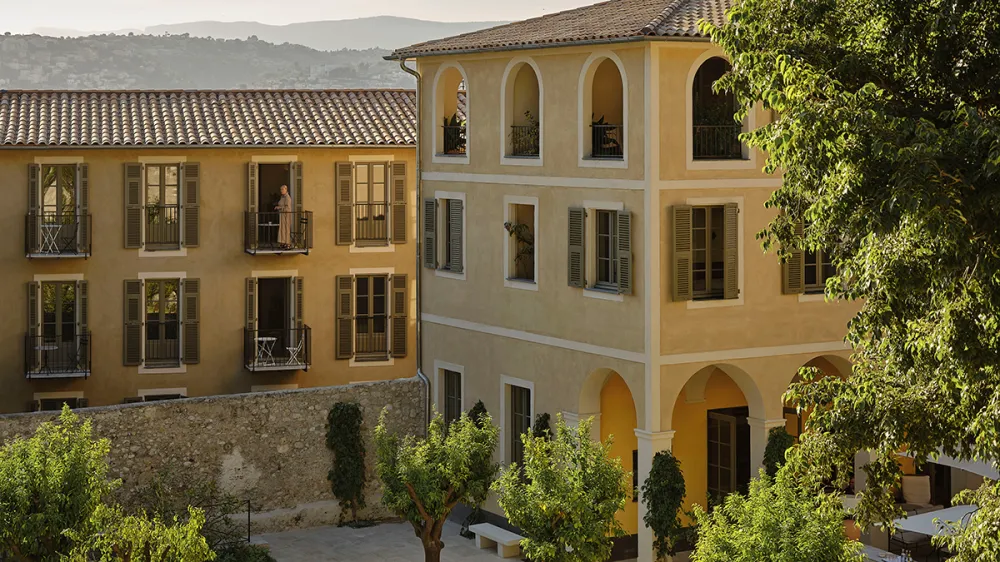Across Europe, hoteliers vie for religious sanctums to offer guests inner peace mixed with old-world splendor.
The first time Valéry Grégo laid eyes on the Couvent de la Visitation in Nice in the south of France, he was overcome with a sense of having been called to care for it.
The hotelier already had a reputation for unique, design-led properties (addresses like Le Pigalle in Paris and Les Roches Rouges in Saint-Raphaël on the French Riviera), but here he found a site like nothing else. It was a sprawling 80,000-square-foot convent from the 17th-century that had lain abandoned since the late 1980s, in the city’s vibrant Italianate old town, Vieux Nice.
“I wasn’t looking for a place with such a rich history, but when I first opened the door, I knew I had to look after this place,” Grégo tells Robb Report.
He also recognized that this was a project that couldn’t be rushed. “We spent several years of historical research to understand the space and its history in order to renovate in a way that would make it better, and make it possible to survive,” he says.
Ten years—and $110 million later—Hôtel du Couvent was finally unveiled in June. The 88-room, five-star property with thermal baths, a herbal shop, and a cloistered restaurant shaded by orange trees is the stand-out opening in a city that has seen a rush of luxe launches in the past 18 months. A 93-year lease only adds to the sense that Grégo is the current chosen custodian.
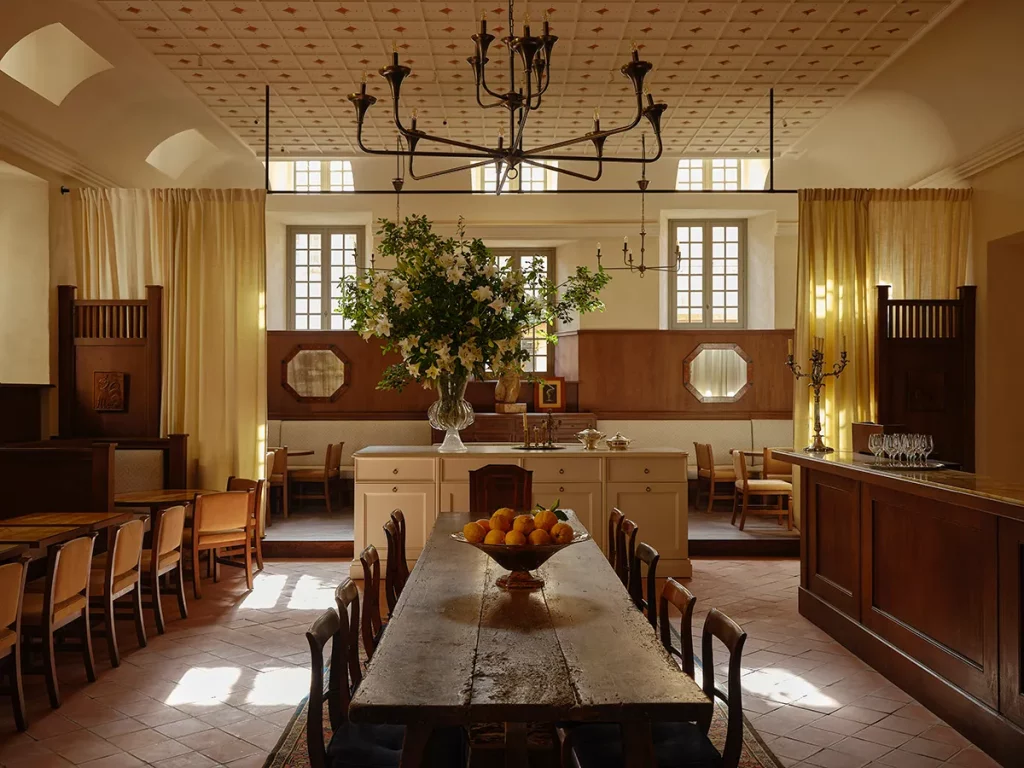
Although images of a sparse, monastic life comes to mind, the fact that convents, monasteries, abbeys, and churches make such a coveted setting for high-end accommodation should be no surprise, says Danielle Oteri, who spent 16 years as an art historian at the Met Cloisters before founding Feast Travel. Particularly as a new breed of travelers prioritize experience over material possessions.
“Being a monk or a nun meant living a relatively privileged life,” Oteri says. “While the living spaces weren’t necessarily luxurious, their locations often were. The structures were designed for serenity and a contemplative experience of nature, which is often still felt.”
The earliest residents might shift uncomfortably in their graves at the spas, swimming pools, and gastronomic restaurants that now flourish under high, vaulted ceilings—nevertheless, these properties still manage to maintain a sense of retreat.
From city centers to cliffside terraces to country plains, here are five more of the best luxury resorts with a religious past.
Anantara Convento di Amalfi Grand Hotel, Amalfi Coast
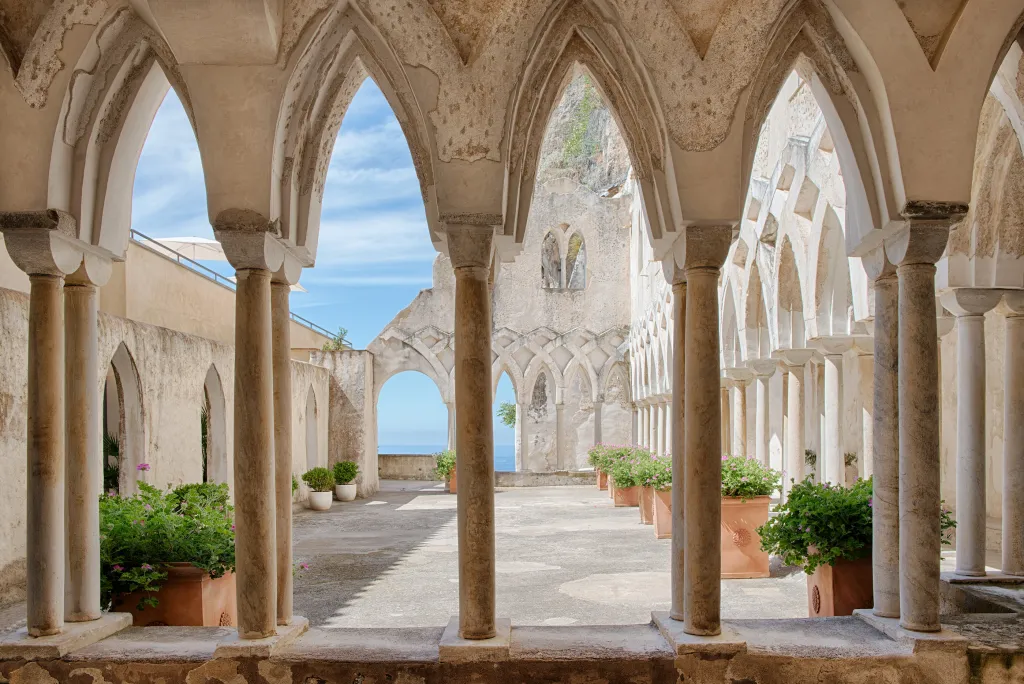
Implanting itself in historic buildings has been a hallmark of Thailand-based Anantara Resorts’ recent push into Europe. At the Anantara Convento di Amalfi Grand Hotel, which opened on the Amalfi Coast last year, that means a Capuchin monastery carved into the cliffside high above the Tyrrhenian Sea in the Middle Ages. The Chapel of St. Francis—which can host weddings—and the Norman-Arab cloisters both date from the 13th century, and guests can enjoy a moment of peace and tranquillity along the Walk of the Monks, the bougainvillea-framed path to the infinity pool. One of the brand’s signature experiences similarly reflects the setting: a guided tour of the convent with Fra Marcus, the assistant parish priest at the Convent of San Francesco at nearby Ravello.
Ca’ di Dio, Venice
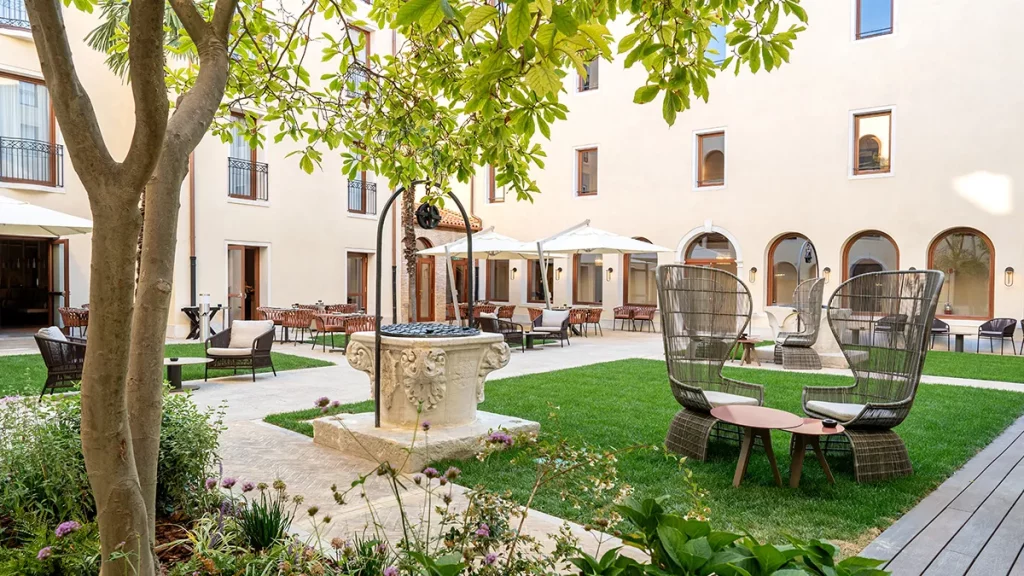
Despite being just a 10-minute walk from Piazza San Marco along the Riva degli Schiavoni waterfront, Ca’ di Dio feels tucked away in one of Venice’s less-frequented thoroughfares thanks to the calm garden courtyard at the center of this corner block. Other spaces that evoke the property’s monastic past include a quiet reading room connecting the Murano-glass and modern art-filled entrance hall and the mood-lit restaurant, Vero, which serves up a cuisine inspired by the flavors and produce of the Venetian lagoon. After a nightcap in Alchemia Bar, catch the knowledgeable night porters for a guided tour into the past of this grand building.
Botanic Sanctuary, Antwerp
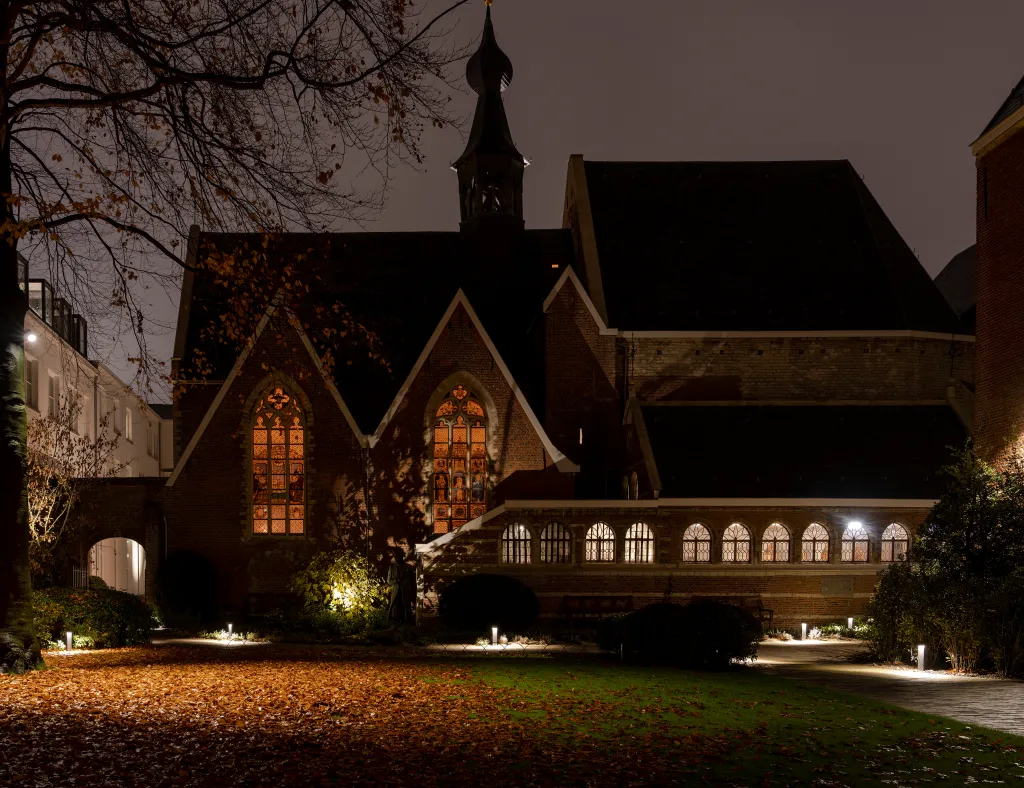
The opening of Botanic Sanctuary in the diamond capital of Antwerp marked a flurry of firsts: the first world-class hotel for the city and the first hotel in Belgium to have four Michelin stars on site (spread out across three dining venues, including the two-star Hertog Jan). But the careful, eight-year renovation has breathed a second life into this 13th-century monastery complex concealed behind ancient walls within the city’s Botanic Gardens. The renovation even added a speakeasy-style meeting venue for an invitation-only whisky investment club, the Unprecedented, in its vaulted cellars, and harnessed a rich apothecary tradition in the on-site Botanic Health Spa.
Abbaye de la Bussière, Burgundy
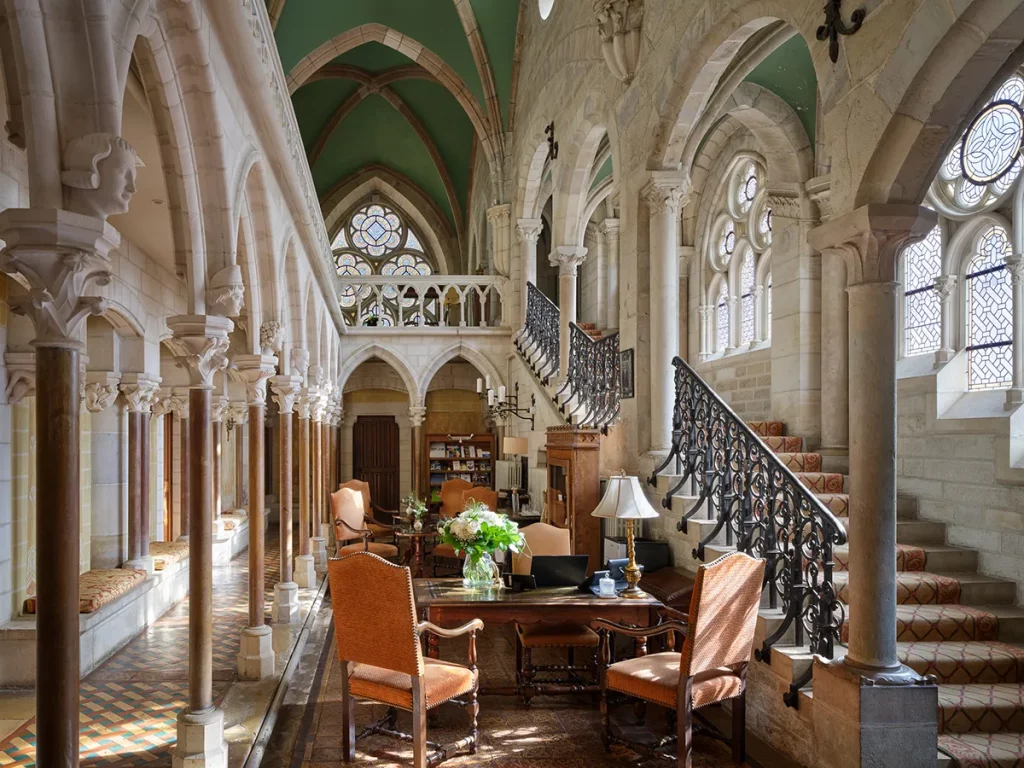
Founded by an English abbot in 1131, this former Cistercian abbey in Burgundy came full circle when, in 2005, an English couple converted the crumbling 17-acre property into a luxe address along the Route des Grands Crus, otherwise known as the Champs-Elysées of Burgundy. Decorative flourishes such as Cistercian pillars and stone sculptures can be glimpsed from all angles. Another particularly atmospheric spot is Le 1131, a formal fine-dining restaurant set beneath pointed arches and dazzling stained glass windows. The expansive lawns are shaded by over 50 species of trees and conceal a 13th-century wine press and cellar, as well as a small crypt now used for weddings and baptisms.
L’Oscar, London
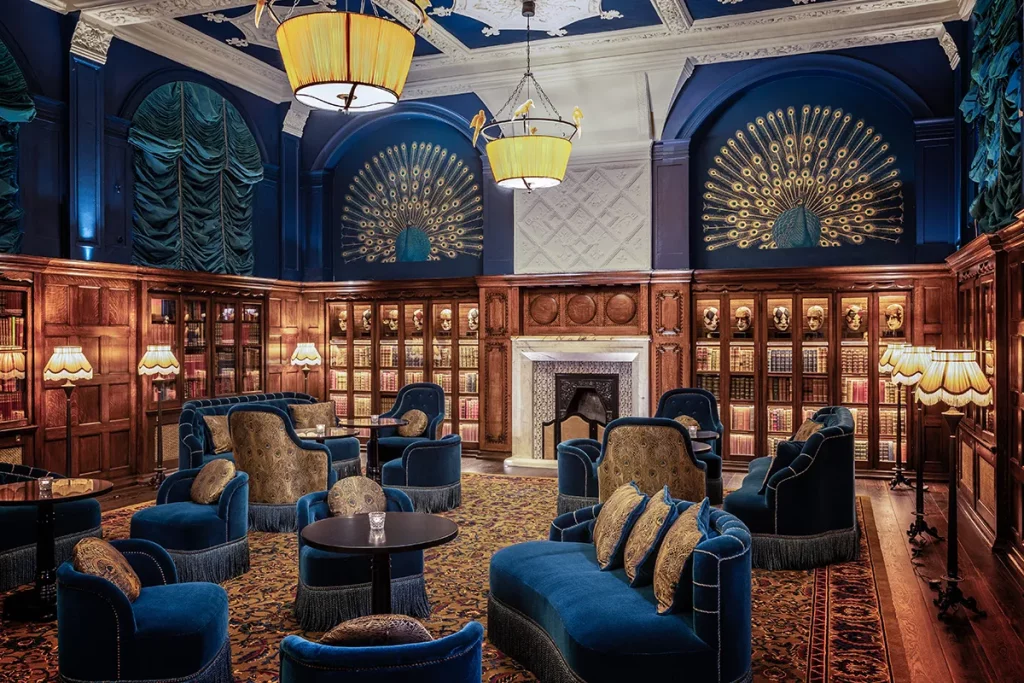
Asceticism has been replaced by total decadence inside the old headquarters of the Baptist church in London. Under the touch of acclaimed designer Jacques Garcia, guests in the 39-room boutique hotel sleep beneath Icelandic Eiderdown Duvets worth thousands and soak in baths sculpted out of marble. The more decorative elements of the original structure have been reworked into this new hedonistic version, including biblical Doulton terra-cotta panels now framed by rich velvets, soft leathers, and gilded fabrics. An octagonal glass-topped chapel constructed in 1856 houses the Baptist, an intimate dining room available exclusively for private hire.

